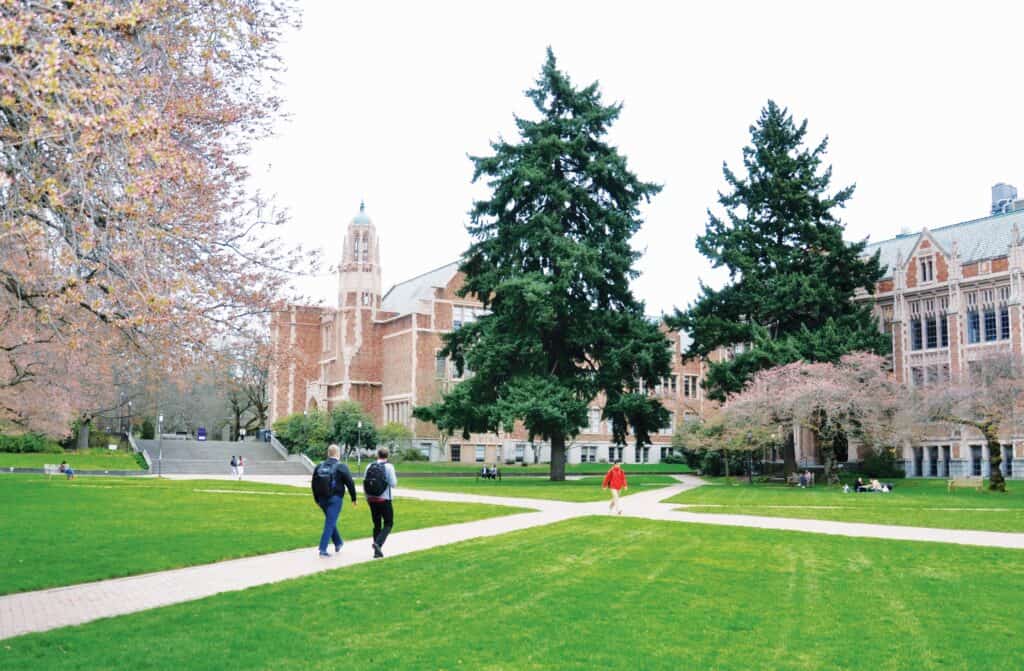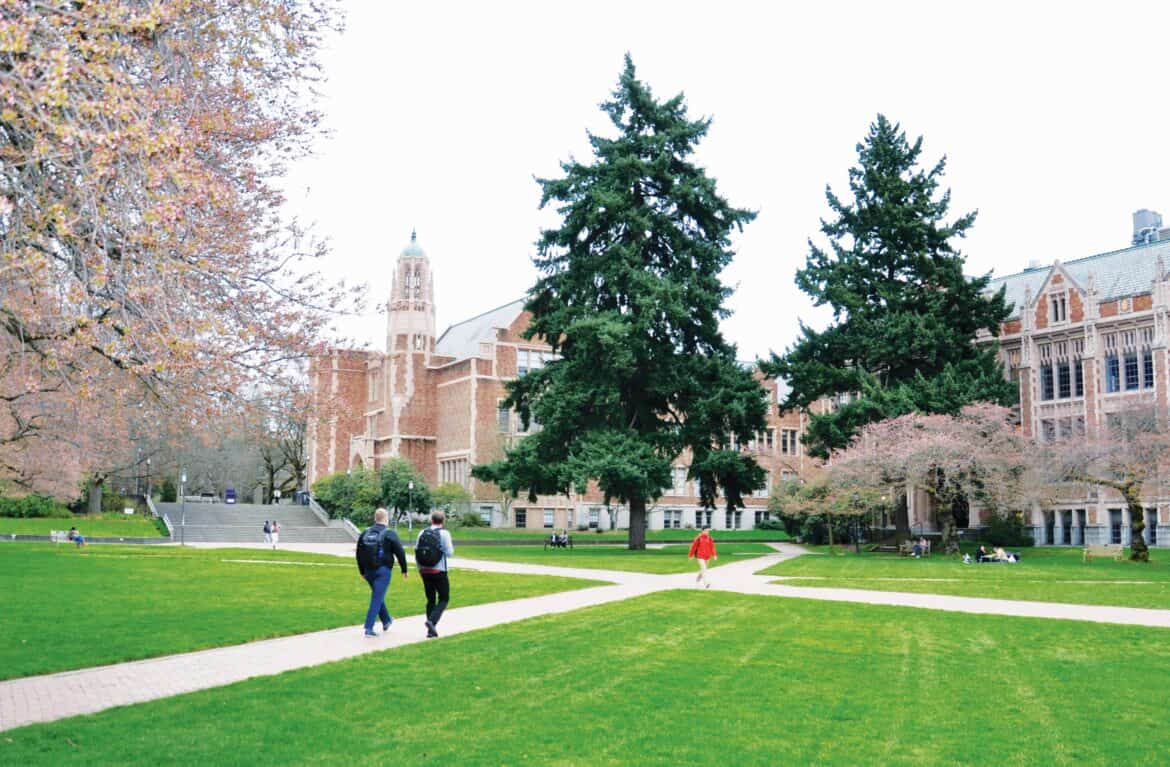
The University of Washington Quad
At Roosevelt High School, students can start earning college credit before graduation — through Advanced Placement exams, Running Start, Career and Technical Education, and College in the High School — to name a few.
These programs allow students to get a headstart on their college transcript to simultaneously earn “credit that can be used for high school graduation as well as college credit,” says Roosevelt Counselor Frank Heffernan.
Several western Washington high schools including Roosevelt partner with the University of Washington through the UW in the High School program. Accredited classes are official UW courses but are taught by Roosevelt teachers who have been trained and approved by university faculty.
According to the Community College Research Center, dual-credit courses contribute to higher high school graduation rates and build students’ confidence in academic and professional settings; these students are more likely to succeed in 4-year institutions.
When dual credit was introduced in the 1980s, it was promoted as a way to “give more advanced students access to challenging coursework,” says to Education Next. However, “As the cost of college rose, and graduation gaps hardened, dual credit was repurposed.”
In the last two decades, college tuition has outpaced inflation rates by over 170%, according to the Education Data Initiative. Dual credit can offer significant financial relief for college tuition after high school.
“You can get college level credit either free through Running Start or a very reduced cost through college in the high school,” says Heffernan. Through the UWHS program, Roosevelt students can earn five college credits at less than a quarter of on-campus rates.
With this, policymakers shifted dual credit proposals to emphasize educational equity, putting “more low-income and first generation students on the path to postsecondary education,” explains Education Next.
According to the Office of the Superintendent of Public Instruction, 58.5% of Washington high schoolers took at least one dual-credit course during the 2020-21 school year.
However, not all students are equally represented among these demographics. During the same year, “Only 37.6% of American Indian/Alaskan Native students and 53.5% of Hispanic/Latino students [took] dual credit courses.” Additionally, participation of low-income students lags by 14.5%.
Currently, “Fewer than half of all Seattle public high schools offer CiHS courses,” Caleb Perkins, executive director of College and Career Readiness at SPS, wrote in a December email; most of which reach “small groups of students.”
“There’s not much gatekeeping [by design] here at Roosevelt, we don’t have a ton of pre-[requisites] for our advanced courses,” says Heffernan. However, “There’s a lot of encouragement and enrichment stuff … provided by families who have the means for students to pursue these things.”
One factor of this may be the costs associated with dual-credit opportunities.
A 2010 report by the College in High School Alliance found that while most states offer dual-credit courses at a discounted rate — only roughly half make them free. Currently, Washington state partially subsidizes CiHS courses, with students paying up to $65 per credit. While Running Start tuition in Seattle is free, students are responsible for additional fees, textbooks, and transportation costs.
With the intention of combating some of these disparities, recent proposals from SPS reveal intentions to centralize CiHS programs and increase relationships with Seattle Colleges.
Currently, Seattle Colleges CiHS courses are offered at Ingraham, Nathan Hale, West Seattle, the Center School, and Lincoln High School.
According to the Roosevelt Registrar’s Office, Roosevelt will begin offering English 101 as a CiHS course through North Seattle College starting Fall 2022.
Tuition will be less expensive than UWHS courses at a flat rate of $150, in comparison to $370.
Statewide, there is legislation being proposed for Washington state to further subsidize the costs of dual-credit courses. In January, Senate Bill 5719 was introduced in the State Legislature and sponsored by Sen. Mark Mullet, D-Issaquah.
Under this bill, “OSPI must create and administer a grant program for providing funds to public schools to cover a portion of the college tuition fee for college in the high school programs,” read Ben Omdal, staff counsel on the Washington State Senate Committee Services, during a Jan. 17 public hearing in the Senate Early Learning & K-12 Education Committee.
“We have chosen with this bill to cover $35 per credit,” Mullet later clarified during the hearing. “This bill would reduce that charge from $330 down to $155.”
If passed, this would apply not only to the costs of Seattle Colleges CiHS tuition rates but also UWHS courses currently offered at Roosevelt.
“The end goal is that if you are a high school student, in the state of Washington, you shouldn’t have to pay to be in school, and that’s the fundamental principle we are trying to follow here,” said Mullet.
